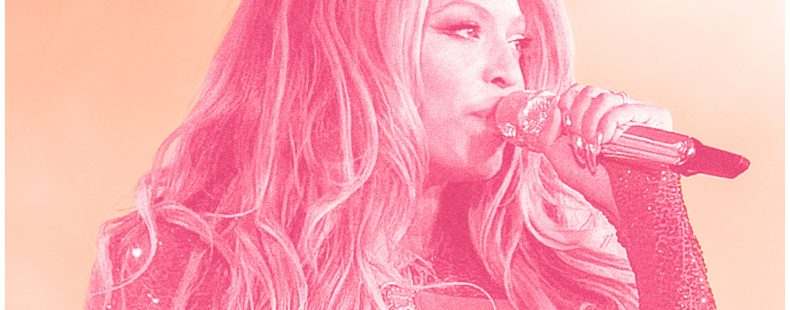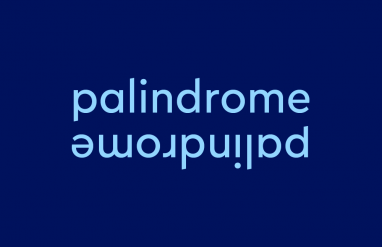So, you’re wondering why Beyoncé’s Renaissance album has proved to be so irresistible and has now inspired a record-breaking tour—declared the highest grossing for a female artist—in 2023. Well, we’ve got 15 words that help tell that story. The album, released in 2022, samples and incorporates elements of a highly danceable musical genre known as house. Renaissance in particular references and pays homage to the Black and queer roots of the early house scene.
It’s time to move, move, move, move and learn some basics about house and how it has influenced the dance music we listen to today.
Top Photo Credit: Carlijn Jacobs
House music terms
house
House music is a genre of high-tempo, electronic dance music that is typically upbeat and easy to dance to. House music uses a four-on-the-floor beat (more on that in a bit) and has a tempo of around 120 beats per minute or slightly higher. House music is popularly mixed by DJs in nightclubs.
🎵 Did you know ... ?
House as a musical genre is often traced back to the later 1970s/early 1980s in the city of Chicago and said to descend from the disco music of the time. Specifically, the origin of house music is often attributed to DJs who mixed at The Warehouse nightclub in Chicago. As the music spread in popularity, the music from the Warehouse became known simply as “house music.”
deep house
Deep house is a subgenre of house music that typically features slower, more soulful beats and a slightly slower tempo. It is often said to be a chiller, more mellow form of house music. The name deep house refers to the fact that the subgenre features deeper music, usually accompanied by percussion and vocals.
tribal house
Tribal house is a subgenre of house music that typically combines house music with world music, especially percussion. Because it includes any house music that incorporates indigenous music, the sound of tribal house music often varies widely from artist to artist. The origin of the name tribal house is unknown, although it likely refers to the fact that the subgenre is known for songs that combine house music and the “tribal” music of the indigenous people of Africa and Latin America.
dance music
The term dance music is used to refer to any music that is made with the intention that people will dance to it. This very general term has been used to refer to a wide variety of music, which could include anything from swing, salsa, disco, and mambo to EDM. Speaking of which …
EDM
EDM, which stands for electronic dance music, is also commonly known as dance music or just dance. As its name suggests, EDM is typically created electronically and often features danceable beats and synthesized sounds. Often, the term EDM is used generally to refer to a wide range of electronically created music of many different specific genres. House music is one of the oldest genres of EDM. Technically, EDM could refer to any music that was created electronically. The modern dance music that EDM typically refers to is often said to have been influenced by the disco and techno music that was played in nightclubs during the 1970s and 1980s.
techno
Techno is a genre of EDM that also evolved from disco. Techno music is typically known for its very fast synthesized beats that focus on rhythm rather than melody. The techno genre is often known for experimentation and musicians making creative use of technology and sound equipment to make unique sounds.
The name techno likely refers to the fact that this type of music is produced electronically, i.e., by musical technology. The name techno for the specific genre of music was popularized by the album Techno! The New Dance Sound of Detroit released in 1988. The city of Detroit is often credited as the birthplace of techno music.
electro
Electro, also known as electro-funk, is a genre of EDM that was inspired by funk music rather than disco. Electro usually features heavy use of drum machines and similar musical equipment. Electro is typically instrumental, but it may also use synthesized or distorted vocals. Like techno, electro often has artists make extensive use of musical equipment to create unique sounds and beats.
Although the exact origin of the name electro is unknown, the name likely references the fact that electro music is a type of electronic music.
Speaking of funk, what do you know about the sci-fi subgenre steamfunk?
breakbeat
Breakbeat is a type of EDM that makes heavy use of breakbeats. Breakbeats are sampled drum breaks taken from songs of genres that typically feature them, such as rock, funk, jazz, and hip-hop. A breakbeat song may be composed of two different sample breakbeats that go back and forth, for example. In modern music, breakbeat is not always considered to be its own genre, and instead EDM songs are said to have breakbeats as part of their sound. Breakbeat music is named after breakbeats, which are beats made from drum breaks of songs.
drum and bass
Drum and bass is another genre of EDM that uses breakbeats. This type of music usually combines fast breakbeats with bass-heavy samples. The heavy emphasis on baselines is typically what sets this type of music apart from other EDM that uses breakbeats. The name drum and bass likely references the fact that this type of music typically involves heavy use of breakbeats (drums) and bass.
disco
Disco is a genre of dance music that was extremely popular in nightclubs during the 1970s. Disco music was known for its upbeat tempo, repetitive vocals, and catchy beats, and it relied on a wide range of instruments and musical equipment, such as synthesizers and drum machines. The name disco is short for discotheque. Discotheque is another word for a nightclub, especially one that features dancing.
four-on-the-floor
The term four-on-the-floor refers to a simple drum pattern in which a drummer plays the bass drum in four consecutive quarter notes. This pattern results in the bass drum following a simple 1, 2, 3, 4 rhythm. Four-on-the-floor was very commonly used in disco music and continues to be featured in many modern instrumental musical genres, such as EDM. The name four-on-the-floor likely references the fact that the four note pattern is played by a bass drum, which is usually on the floor and struck using a drum pedal.
kick drum
A kick drum, more commonly known as a bass drum, is the largest type of drum that is capable of producing the lowest notes. On most drum sets, the large kick drum is positioned on its side at the bottom of the kit and is struck using a foot-operated pedal that causes a small mallet to hit the drum. The bass drum/kick drum is often considered the most important percussion instrument in a band or orchestra because its deep, distinctive sound establishes the beat and rhythm that the other instruments will follow.
beat
In music, beat refers to one of the three basic components that make up a song, along with harmony and melody. Beat is the unit of time in a song. Beat is what musicians use in order to count notes and make sure they are playing in sync with their other musicians. The beat determines how fast or slow the song is. The beat creates the rhythm of a song and is often described as the pulse that people clap or dance along to when they listen to a song. The percussion instruments, such as the drums and cymbals, are typically seen as being most responsible for the beat and establishing the rhythm that the other instruments will follow.
double time
In music, double time refers to a technique in music in which a song seems to increase in tempo without actually changing the time signature. For example, a song may have a “normal time” in which a snare drum is hit on every second and fourth count. At some point, the song may change to double time in which the snare drum is hit twice as often, i.e., on every count. Doing this causes the song to increase in pace even though the overall time signature hasn’t changed. Double time is a general term and how it is accomplished varies depending on the specific song and the count, beat, and instruments that it uses. Generally speaking, musicians use double time to make the pulse of a song sound faster without actually increasing the tempo.
jacking
Jacking, also known as jackin’ or the jack, is a dance style popular among listeners of house music. Jacking is related to disco dancing, and typically involves moving the torso back and forth in a rippling or undulating motion. In modern times, the term jacking is often used to refer to jackin’ house, an experimental style of house music that typically uses higher beat ranges to create faster or more energetic sounding music.
Take our quiz that hits all the right notes
Before you hit the dance floor, make sure to learn this electrifying vocabulary for the kind of music Beyoncé’s album Renaissance celebrates. A surefire way to see how much you have learned is to take this quiz on these terms. Then you can move, move, move all you want.














